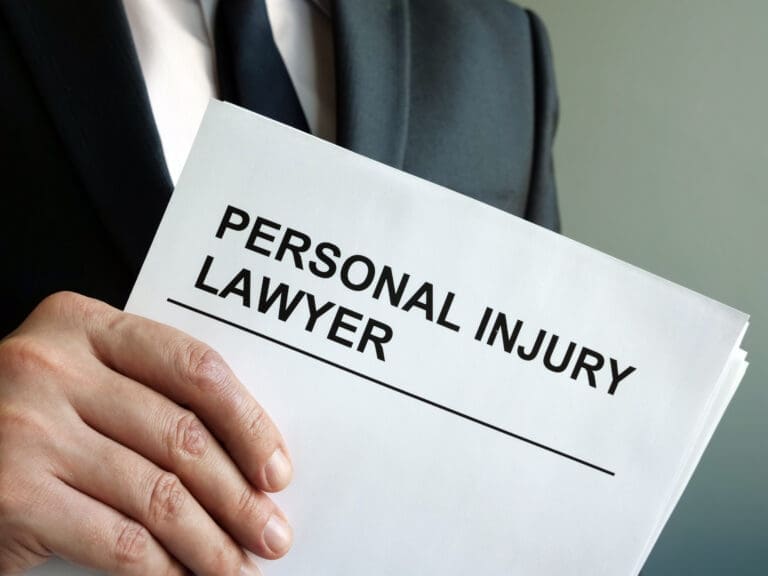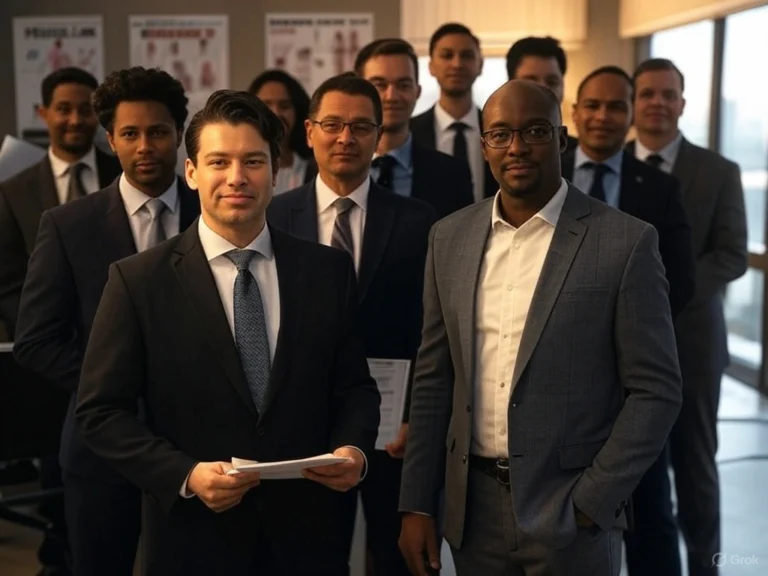
Experiencing a car accident can be a traumatic and overwhelming event. Knowing the immediate steps to take after a car accident can help ensure your safety, protect your legal rights, and facilitate the claims process. According to a car accident lawyer, taking the right actions in the moments following a crash is crucial. This comprehensive guide will walk you through the steps you should take after a car accident, based on legal advice and best practices.
Ensure Safety and Seek Medical Attention
The first and foremost priority after a accidente de tráfico is to ensure the safety of all individuals involved. If you are able to, move to a safe location away from traffic. Turn on your hazard lights to alert other drivers. Check yourself and passengers for injuries. Even if injuries are not immediately apparent, it is important to seek medical attention as soon as possible. Some injuries, such as whiplash or internal injuries, may not be evident right away but can have serious consequences if left untreated.
Call Emergency Services
Dial 911 to report the accident and request medical assistance if needed. When emergency responders arrive, they will provide necessary medical care and document the scene. Having an official police report can be invaluable when filing an insurance claim or pursuing legal action.
Documentation of Injuries
It is important to document any injuries sustained in the accident. Take photographs of visible injuries and keep detailed notes about any pain or symptoms you experience. Medical records and photographs can serve as crucial evidence in your personal injury claim.
Document the Accident Scene
Collecting evidence at the scene of the accident is essential for supporting your claim and protecting your legal rights. While it may be difficult to think clearly after an accident, following these steps can help you gather important information.
Take Photographs
Use your phone or a camera to take comprehensive photographs of the accident scene. Capture multiple angles of the vehicles involved, including damage, license plates, and the surrounding environment. Photographs can provide a clear visual record of the accident and help establish fault.
Exchange Information
Exchange contact and insurance information with the other driver(s) involved in the accident. Be sure to obtain the following details:
- Name and contact information
- Insurance company and policy number
- Driver’s license number
- Vehicle make, model, and license plate number
Witness Statements
If there are any witnesses to the accident, ask for their contact information and a brief statement of what they saw. Witnesses can provide unbiased accounts of the incident, which can be valuable in corroborating your version of events.
Notify Your Insurance Company
After ensuring safety and documenting the accident scene, it is important to notify your insurance company about the accident. Timely reporting can expedite the claims process and ensure that you receive the coverage you are entitled to under your policy.
Provide Accurate Information
When speaking with your insurance company, provide accurate and honest information about the accident. Stick to the facts and avoid speculating about fault or making statements that could be used against you later. Your insurance company will investigate the claim and determine liability based on the evidence.
Understand Your Coverage
Familiarize yourself with the terms of your insurance policy, including coverage limits, deductibles, and any applicable exclusions. Understanding your policy can help you navigate the claims process and ensure that you receive the compensation you deserve.
Consult with a Car Accident Lawyer
Consultar con un car accident lawyer can provide you with valuable guidance and representation throughout the claims process. A lawyer can help you understand your legal rights, negotiate with insurance companies, and pursue compensation for your injuries and damages.
Consulta jurídica
During your initial consultation, the lawyer will review the details of your case, assess the strength of your claim, and provide an overview of your legal options. This consultation is typically free of charge and can help you make informed decisions about how to proceed.
Representation and Negotiation
A car accident lawyer can represent you in negotiations with insurance companies and other parties involved in the accident. They will work to secure a fair settlement that covers your medical expenses, property damage, lost wages, and other related costs. If a settlement cannot be reached, your lawyer may advise you to pursue litigation to achieve a favorable outcome.
Understand Your Legal Rights
Understanding your legal rights after a car accident is crucial for protecting yourself and ensuring that you receive fair compensation. Different states have different laws regarding fault, liability, and the statute of limitations for filing a personal injury claim.
Fault and Liability
In some states, fault is determined based on comparative negligence, meaning that each party’s degree of fault is assessed, and compensation is adjusted accordingly. Other states follow a no-fault system, where each party’s insurance covers their own damages regardless of fault. Understanding how fault and liability are determined in your state can help you navigate the claims process more effectively.
Statute of Limitations
The statute of limitations is the time period within which you must file a personal injury claim. This period varies by state and can range from one to several years. Failing to file a claim within the statute of limitations can result in the loss of your right to seek compensation. Consulting with a car accident lawyer can help ensure that you meet all necessary deadlines.
Common Causes of Car Accidents
Understanding the common causes of car accidents can help you avoid future incidents and reinforce your case if the accident was caused by another party’s negligence. Common causes include:
Distracted Driving
Distracted driving is one of the leading causes of car accidents. This includes activities such as texting, talking on the phone, eating, or using in-car technologies while driving. Demonstrating that the other driver was distracted at the time of the accident can strengthen your claim.
Speeding
Speeding is a significant factor in many car accidents. Exceeding the speed limit reduces reaction time and increases the severity of collisions. Evidence of the other driver’s speeding, such as traffic camera footage or witness statements, can support your case.
Driving Under the Influence
Driving under the influence of alcohol or drugs impairs a driver’s ability to operate a vehicle safely. If the other driver was intoxicated at the time of the accident, this can be a strong basis for establishing their liability.
Pursuing Compensation for Damages
After a car accident, you may be entitled to compensation for various types of damages. Understanding the different categories of damages can help you ensure that you receive full and fair compensation.
Medical Expenses
Medical expenses can include costs for emergency care, hospital stays, surgeries, medications, physical therapy, and ongoing medical treatment. Keeping detailed records of your medical expenses is essential for supporting your claim.
Lost Wages
If your injuries prevent you from working, you may be entitled to compensation for lost wages. This includes both current and future earnings that you are unable to earn due to your injuries. Documentation from your employer and medical provider can help substantiate your claim for lost wages.
Dolor y sufrimiento
Pain and suffering refer to the physical and emotional distress caused by the accident and your injuries. This type of compensation is more subjective and can be more challenging to quantify. A car accident lawyer can help you document and present evidence of pain and suffering to support your claim.
Relaciones con las compañías de seguros
Navigating the claims process with insurance companies can be complex and frustrating. Understanding how to deal with insurance companies can help you avoid common pitfalls and secure the compensation you deserve.
Negotiating a Settlement
Insurance companies often aim to settle claims for the lowest possible amount. It is important to approach settlement negotiations with a clear understanding of the value of your claim. A car accident lawyer can negotiate on your behalf to ensure that you receive a fair settlement.
Evitar errores comunes
Common pitfalls when dealing with insurance companies include accepting the first settlement offer, making recorded statements without legal representation, and signing release forms without fully understanding the terms. Avoiding these pitfalls can help protect your legal rights and ensure that you receive adequate compensation.
Preparing for Litigation
If a fair settlement cannot be reached, you may need to pursue litigation to resolve your claim. Preparing for litigation involves several key steps.
Filing a Lawsuit
Su car accident lawyer will file a lawsuit on your behalf, outlining the details of your claim and the damages you are seeking. The defendant will have an opportunity to respond, and the case will proceed through the legal process.
Fase de descubrimiento
During the discovery phase, both parties will exchange information and evidence related to the case. This can include depositions, interrogatories, and requests for documents. The discovery phase allows both sides to build their cases and assess the strength of the opposing party’s arguments.
Trial and Verdict
If the case goes to trial, both parties will present their evidence and arguments before a judge or jury. The judge or jury will then render a verdict, determining liability and awarding damages if applicable. The trial process can be lengthy and complex, but a favorable verdict can result in substantial compensation for your injuries and damages.
The Role of Expert Witnesses
Expert witnesses can play a crucial role in personal injury cases, providing specialized knowledge and testimony to support your claim.
Medical Experts
Medical experts can provide testimony about the nature and extent of your injuries, the necessary medical treatment, and the long-term impact on your health. Their testimony can help establish the connection between the accident and your injuries.
Accident Reconstructionists
Accident reconstructionists use scientific methods to analyze the accident scene, vehicle damage, and other evidence to determine how the accident occurred. Their analysis can help establish fault and liability.
Economic Experts
Economic experts can provide testimony about the financial impact of the accident, including lost wages, future earning capacity, and the cost of ongoing medical care. Their testimony can help quantify your damages and support your claim for compensation.
Emotional and Psychological Impact
Accidentes de tráfico can have a significant emotional and psychological impact, in addition to physical injuries. Recognizing and addressing these effects is important for your overall well-being and can support your claim for pain and suffering.
Emotional Distress
Emotional distress can include anxiety, depression, post-traumatic stress disorder (PTSD), and other psychological conditions resulting from the accident. Seeking treatment from a mental health professional can help you manage these effects and provide documentation for your claim.
Impact on Daily Life
The psychological impact of a accidente de tráfico can affect your daily life, including your ability to work, socialize, and engage in activities you previously enjoyed. Documenting these impacts can help support your claim for pain and suffering.
Legal Considerations for Different Types of Accidents
Different types of car accidents can present unique legal considerations. Understanding these differences can help you navigate the claims process more effectively.
Rear-End Collisions
Rear-end collisions are often caused by following too closely or failing to brake in time. In many cases, the driver of the rear vehicle is found to be at fault. However, there can be exceptions, such as sudden stops by the lead vehicle.
Side-Impact Collisions
Side-impact collisions, also known as T-bone accidents, can occur at intersections or when one vehicle fails to yield the right of way. Determining fault in side-impact collisions can be complex and may require the analysis of traffic signals, right-of-way rules, and witness statements.
Head-On Collisions
Head-on collisions are among the most severe types of accidents and can result in serious injuries or fatalities. These accidents often occur due to wrong-way driving, impaired driving, or loss of control. Establishing fault in head-on collisions typically involves a thorough investigation of the accident scene and contributing factors.
Conclusión
Knowing the immediate steps to take after a car accident can make a significant difference in ensuring your safety, protecting your legal rights, and securing fair compensation. By following the guidelines provided by a car accident lawyer, you can navigate the aftermath of an accident with confidence. Remember to prioritize safety, document the scene, seek medical attention, and consult with a lawyer to protect your interests. Understanding the common causes of accidents, pursuing compensation for damages, and being prepared for potential litigation can help you achieve the best possible outcome for your case.








